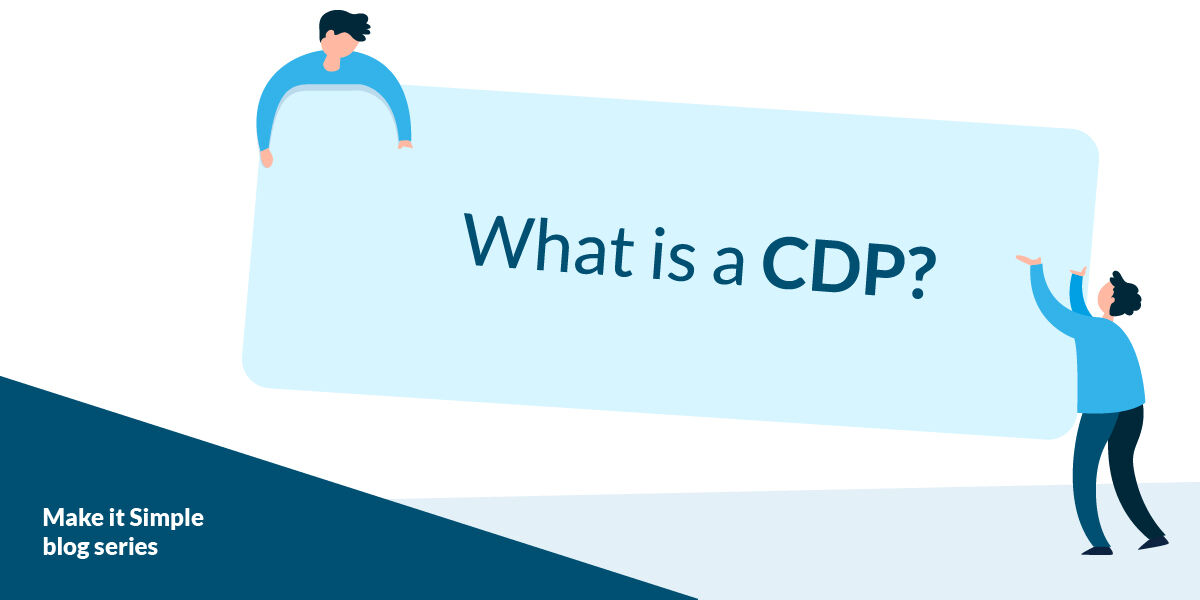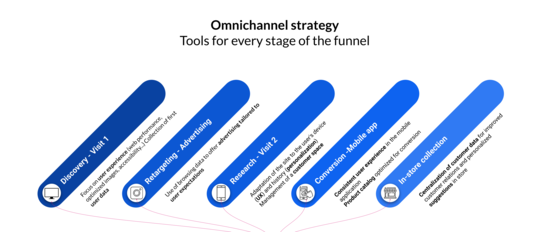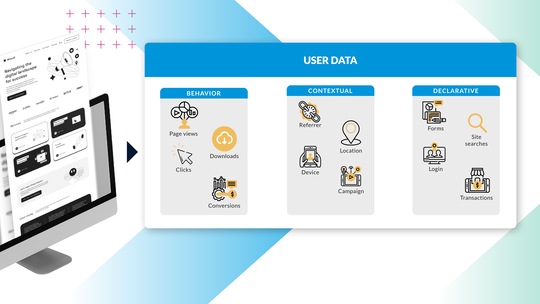What Is a CDP?

CDPs, or Customer Data Platforms, have recently become a hot-button topic of conversation. Mentioned usually, but not always, in the same breath as DXPs. Now, while we wouldn’t necessarily say that it’s incorrect to pair these two together, it is important to know that DXPs and CDPs are not the same thing. It would be like comparing a watermelon with an orange – sure, they’re both fruit, but try catching a watermelon with one hand.
We talked before about DXPs, or Digital Experience Platforms. While we didn’t necessarily define what a DXP is (because heaven knows enough people have tried to do that), we did talk about what a DXP can do – namely, that it helps to make sure that the experience your customers have with you digitally is consistent, controlled, and valuable to them.
So like we did with DXPs, let’s make it simple by diving into what makes up a CDP – Customer, Data, and Platform - and then we can talk about what it means in relation to a DXP.
Customer
You’re a business. By virtue of being a business, you have customers. Is it really more complicated than that?
Well, kind of. You see, it’s not necessarily just that you have customers but the forms they are now taking. Namely, always online, always available consumers engaging with you on a vast digital scale - web, mobile, social media, smart watches, Tinder (seriously). In fact, your customers are engaging with you in so many disparate ways that it can be very hard to keep track of when and how these engagements occur. Mainly because each engagement has its own influx of…
Data
Nifty how we did that, right?
But seriously, data is a big deal. Speaking from a high-level view, data is what drives every decision your business makes. Purchase data tells you what products are popular and which need tune-ups. Performance data tells you if Maureen in Accounting is pulling her own weight (she is).
Customer data is the same way. With every interaction, your customers give you data – some basic, like their email addresses and their phone numbers, and some complex, like page views, downloads, and purchase history. You need to be careful about what data you’re collecting, and the ways in which you're collecting it, but in the right hands customer data allows you to better understand your customers in a way that was unheard of even a decade ago.
The problem is that, as we hinted earlier, there are just so many ways you can get this data. Social media, CRMs, marketing automation software, email services - even and especially your analytic software. And each piece of data, whether it’s from your website, a third-party application or some other venue, feeds into a different repository, or storage unit. That’s a problem, especially if you want to use this data to better interact with your customers. It’d be like trying to build a toy spaceship if you left the pieces scattered across a hundred different houses.
This brings us to our last piece…
Platform
We went over platforms in our DXP article, so we won’t belabor the point again here. But as with digital experiences, customer data needs a base of sorts to manage its accumulation and dispersal. Or else it’s going to end up like the aforementioned toy spaceship.
As such, a customer data platform is a means of doing just that – a place to centralize all the data your customers send you from their various interactions and experiences. There are degrees and levels to this, of course – we try to keep it simple, yet our industry loves complication – but the main goal of most CDPs is to answer two problems:
How do I get all my customer data in one place?
Now that it’s in one place, how do I effectively use it?
That second question, funny enough, ties into the relationship between CDPs and DXPs.
DXP & CDP – A (Brief) Overview
If you’ve been following along in these two articles, you’ve noticed that customer is one of the biggest focal points in both of them. Both implicitly (digital experiences are how customers engage with you) and explicitly (customer data literally has customer in its name).
There’s a very good reason for this – DXPs and CDPs are two sides of a constantly spinning coin. Whereas one is focused on managing the experience between a company and its customers, the other is focused on using the data from those experiences to better understand and speak to those customers.
When used in unison, they can create an almost symbiotic, constant feedback loop – the CDP feeds customer data into the DXP, which creates better customer experiences that accumulates more data which flows back into the CDP and so on. It’s a powerful relationship between two very valuable pieces of marketing technology, and it can drastically change how your organization does business.
In Conclusion
CDPs, like DXPs, are complicated pieces of software, but understanding their basics shouldn’t be difficult. While we hope this serves as a good entry point into learning about them, we encourage you to continue reading and researching CDPs on your own. Be sure to also check out the other articles in our Make It Simple series. If you liked this one, you’re going to love the one we did on Headless.
Don’t forget – Jahia is one of the leading DXP and CDP providers on the market, and we love to help our clients find success using our products. Interested in learning more about what we can do for you? Contact us!


